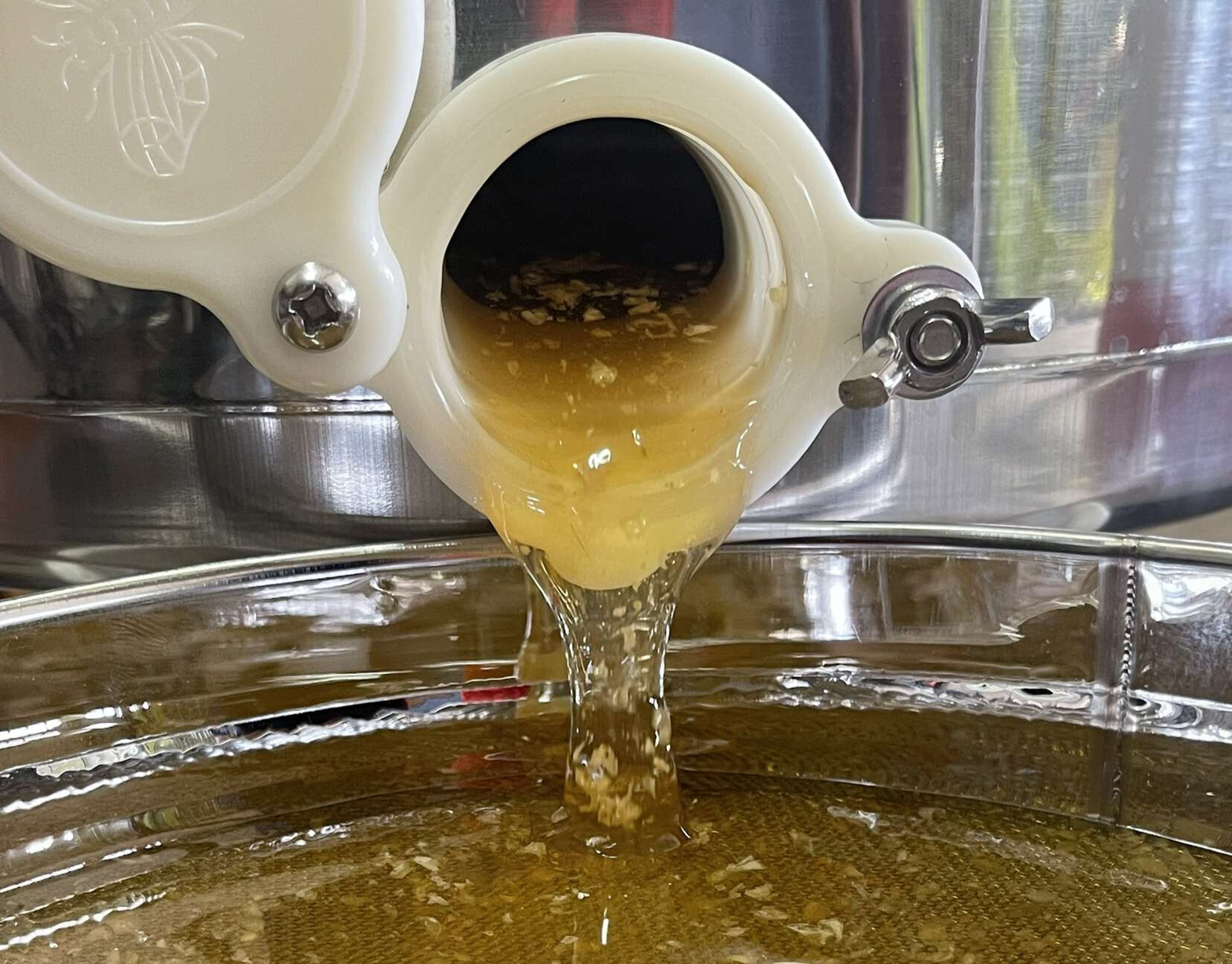Prepare to get a little sticky!

The honey starts its journey in the honeycomb, meticulously built and filled by bees. But how does it get from the hive to your jar? Let's delve into the process of extracting honey, focusing on transferring it from the frame to the jar.
It is important that the beekeeper only removes excess honey frames from the hives so that the bees are able to use the honey they have worked to create. When harvested, honey frames come capped with a thin layer of beeswax. Before the honey can flow freely, these caps need to be removed. We use a special knife called a decapping knife that allows us to remove this thin layer of beeswax. However, it is important to only remove the top layer of wax, as the bees will be able to use that wax for future honey storage. The wax that is removed can be used to make candles or other beeswax products!
After the honey is exposed, we use a honey extractor. It is a centrifuge that spins the frames, flinging the honey outwards. Frames are typically placed inside a rotating basket. As the extractor spins, the honey is forced out of the honeycomb and collected at the bottom while preserving the wax.
After extraction, the honey may still contain small bits of beeswax and debris. Here, different honey products have different processes. When it comes to honey, you'll often see options for filtered and unfiltered varieties. Filtered honey boasts a clear, smooth appearance, achieved through a process that removes pollen and wax particles as it moves through progressively finer mesh strainers. Unfiltered honey, on the other hand, retains these elements, resulting in a cloudier texture. This difference goes beyond aesthetics – unfiltered honey may offer more potential health benefits due to the presence of pollen, enzymes, and antioxidants that filtration can remove. However, filtered honey often has a longer shelf life and creamier consistency. Ultimately, the choice depends on your priorities: a shelf-stable, smooth honey or one with a more natural, possibly more nutritious profile.
Now comes the best part! We carefully pour the strained honey into sterilized jars. It is important to leave a small air gap at the top and wipe the rim clean. Once sealed, the local honey is ready to be enjoyed on its own or as part of a delicious snack!
